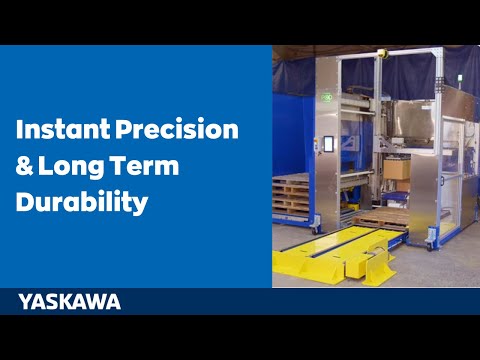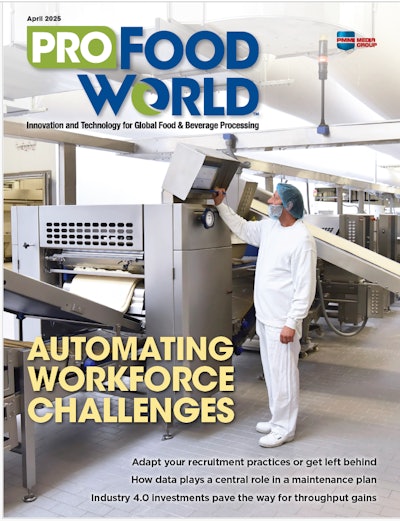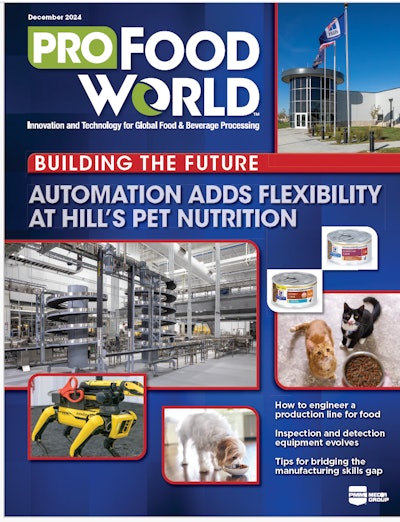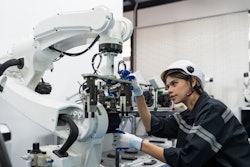There’s been no shortage of hand wringing over the job costs of automation—and it’s not without cause. Automated devices are increasingly replacing people in all sorts of occupations. Just as a long list of other technologies have done before. Because dramatic workplace transformations do not occur often, it’s easy to see such shifts as zero-sum occurrences and overlook the new options presented as the familiar ones fade away.
The last time such a major shift took place was during the transition from an agricultural-based economy to an industrial-based economy. And though the tractor and other automated farm equipment did put many farmers and other agricultural workers out of work, people did successfully make the shift. This example has been used so frequently and is so far removed from our current reality that many dismiss this comparison and say that the disruption being brought by automation today is different from the change brought by automation to farming a century ago.
David Autor, an economist who assesses the labor market consequences of technological change and globalization, disagrees. In a recent TedTalk to explain why automation does not just eliminate jobs, Autor highlighted an interesting employment development that has taken place in the banking industry since the advent of the ATM. In his presentation, Autor said: “In the 45 years since the introduction of the automated teller machine…the number of human bank tellers employed in the United States has roughly doubled, from about a quarter of a million to a half a million. A quarter of a million in 1970 to about a half a million today, with 100,000 added since the year 2000.”
Though the number of tellers per bank dropped by roughly a third due to the ATM, banks also discovered that, as a result of the ATM, it was less costly to open new branches, said Autor. He added that the number of bank branches has increased about 40 percent since the appearance of the ATM. That’s why there are more tellers now than there were before ATMs replaced so many of them.
Of course, tellers today do different work than they did historically. “As their routine, cash-handling tasks receded, they became less like checkout clerks and more like salespeople, forging relationships with customers, solving problems and introducing them to new products like credit cards, loans and investments,” said Autor. The tellers are now performing “a more cognitively demanding job.”
The same thing has been happening in the manufacturing and processing industries for decades now. While automation has eliminated many industrial jobs, it is also largely responsible for the plethora of industrial jobs that have been coming back to the U.S. It’s also the reason so many new manufacturing jobs are starting here rather than elsewhere. But today’s manufacturing jobs—just like today’s bank teller jobs—are clearly different from what they used to be. Autor pointed out, “As our tools improve, technology magnifies our leverage and increases the importance of our expertise and our judgment and our creativity.”
In the interim phase we find ourselves in—between manufacturing’s past and its future—we face a challenge. A challenge we have faced before. The last time was a century ago, during the transition from the agricultural economy to an industrial one. As automation was eliminating agricultural jobs, the farm states “took the radical step of requiring that their entire youth population remain in school and continue their education to the ripe old age of 16,” said Autor. “This was called the high school movement, and it was a radically expensive thing to do. It also turned out to be one of the best investments the U.S. made in the 20th century. It gave us the most skilled, the most flexible and the most productive workforce in the world.”
Autor pointed out that, when surveying our current industrial employment situation with an eye toward correcting its current course, “It's foolish to say there's nothing to worry about. Clearly we can get this wrong. If the U.S. had not invested in its schools and in its skills a century ago with the high school movement, we would be a less prosperous, a less mobile and probably a lot less happy society. But it's equally foolish to say that our fates are sealed. That's not decided by the machines. It's not even decided by the market. It's decided by us and by our institutions.”
Given the current state of political matters in the U.S., it’s clear than any large scale, government-driven support for an educational solution—like the one Autor referenced—is highly unlikely. However, action is being taken on a smaller scale in localized areas, such as in Ohio and Indiana, and even in the manufacturing corridor in upstate South Carolina. Despite such positive actions by many of our institutions, the scale of the problem will require additional help from the automation industry and its manufacturing customers.
An example of how automation suppliers are taking action can be seen in Festo’s efforts to bring the German apprenticeship model to the U.S.Yaskawa is another automation technology supplier stepping up to the plate to address the automation-versus-jobs issue through its robotic training programs.
Having seen his former aerospace manufacturing employer go through massive layoffs in the mid-1990s—reducing its workforce by more than 60 percent in three years—Buddy Smith, who is now manager of the Yaskawa Academy for Yaskawa America, knows firsthand how technology suppliers and their manufacturing customers can play a more active role in improving today’s manufacturing workforce situation.
“If a manufacturer of any size decides to add robots to its workforce,” said Smith, “the company’s owners and executives can and should prepare the workforce in advance. There are a lot of communication opportunities to start a dialogue with workers. For example, explain why robotics will help workers, boost production and increase profit sharing. When a company capitalizes on these opportunities, it creates excitement by outlining how robotics can open doors to new training, provide a chance to tackle new responsibilities and reduce injuries.”
To help manufacturing customers who have purchased a robot communicate more effectively with their workers, Smith explained Yaskawa Motoman offers customers a range of robotics classes covering everything from programming to maintenance. “For our maintenance training, a student can spend one week with us and learn about 85 percent of what they’ll face on the job. That’s a terrific example of how retraining an already-employed worker can give them new skills and reap rewards for his or her employers,” he said.
Smith noted that different companies will, of course, have different workforce needs. For example, a large manufacturer may already have some technically inclined workers on staff who “could transition easily into robotics training,” he said. A small job shop, however, may need to look outside its walls to hire a robotics-qualified employee.
“Each company has to think about how to get a return on its robotics investment,” Smith said. “Improving production is not just about purchasing a robot. It’s also about weighing the decision to bring in someone skilled at programming a robot or retraining an employee to program and work with a newly purchased robot. Ultimately, though, the answer is not really a choice between retaining, retraining or recruiting. The solution is a mix of these things depending on the company’s position.”
You can see a sample of how Yaskawa is addressing robotic training issues in its white paper covering Simplified Welding Robot Programming.

























